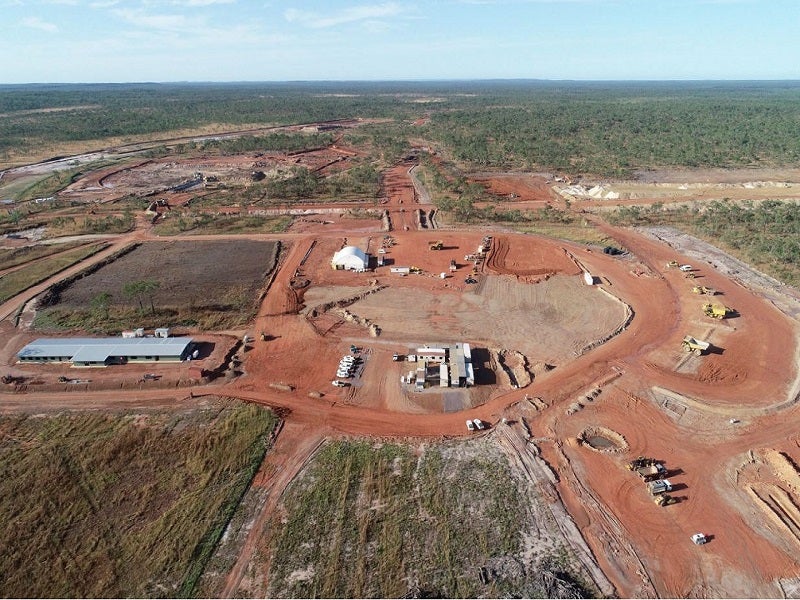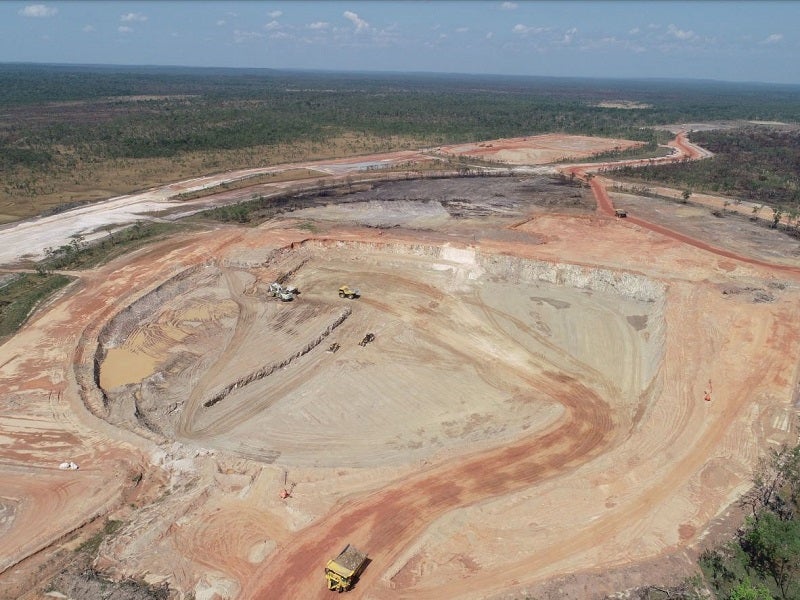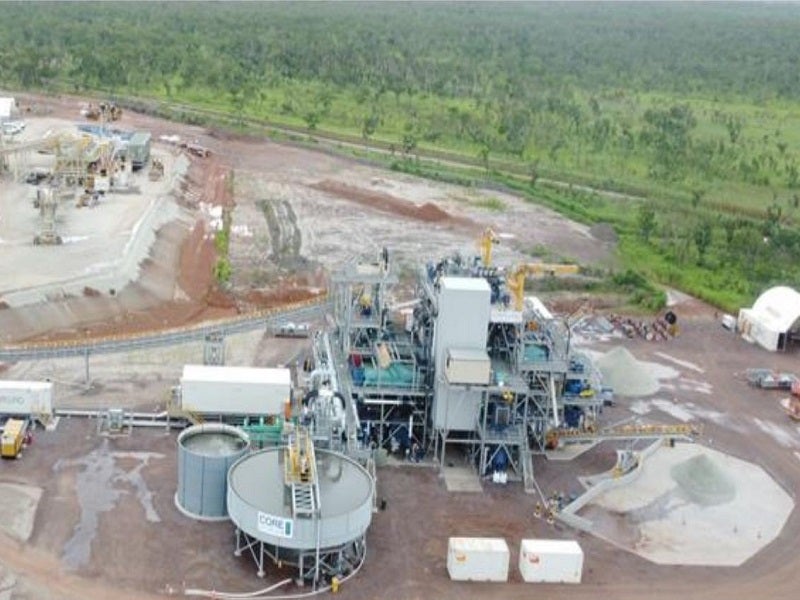The Finniss lithium project is a high-grade lithium mine being developed near Darwin, Northern Territory, Australia.
The mine encompasses five deposits: Grants, Carlton, Sandras, Hang Gong SW and BP33. The project area is made up of 500km² of tenements covering the Bynoe pegmatite field (BPF) and comprising several pegmatites near Darwin.
Core Lithium Limited is developing the project, for which the pre-feasibility study (PFS) was completed in June 2018. The definitive feasibility study (DFS) was completed in April 2019 while a PFS was completed in 2020 which incorporated additional underground mining methods in the mine plan. An upgraded DFS for the project was completed in July 2021.
The project is being developed in multiple stages. The first stage involves open-pit mining at Grants and Hang Gong, as well as underground mining at the Grants, BP33 and Carlton prospects.
Battery-grade lithium hydroxide was produced as part of the scoping level test works on a spodumene mineral concentrate sample taken from the project in April 2021. The final investment decision for the lithium project was made in September 2021.
Construction activities commenced in November 2021, with the first batch of spodumene concentrate produced in February 2023 and the first cargo of spodumene concentrate loaded at the Port of Darwin in May 2023.
The BP33 underground project was also approved by the Northern Territory’s government in May 2023.
Finniss lithium project location, geology and mineralisation
The Finniss lithium project is located within the granted mineral lease ML 31726, which spans 768ha. It is located entirely on and surrounded by undeveloped vacant crown land.
The mineralisation is hosted within pegmatites identified as lithium-caesium-tantalum (LCT) type. The pegmatites are estimated to have formed from the Ma S-Type two sisters granite. Major pegmatites discovered at the Grants and BP33 are composed of coarse spodumene, quartz, albite, microcline and mica.
Finniss lithium project reserves
The proven and probable mineral reserves were estimated at 7.4 million tonnes (Mt) grading 1.3% Li₂O, as of July 2021.
Mining methods and ore processing at Finniss lithium project
The Finniss project will be mined using open-pit and underground mining methods. The Grants deposit is to be mined in two stages with an initial pit followed by a final cut-back, while the BP33 deposit will be developed in a single stage. The Hang Gong deposit will also be mined as an open-pit operation in a single phase.
The Grants underground deposit is expected to be mined using up-hole retreat mining as a transition from Grants open-pit. Located 6km south of the Grants open-pit, the BP33 deposit will be mined using sublevel open-stope mining methods. The Carlton deposit, located south of the Grants open-pit, will be mined using sublevel open stope methods.
The project features a three-stage dense media separation (DMS) plant, which is expected to treat one million tonnes per annum (Mtpa) of spodumene-bearing pegmatite. It is also installed with a reflux classifier and mica removal circuit, in addition to the DMS plant.
The project is expected to produce up to 180,000 tonnes per annum (tpa) of high-quality lithium concentrate. Ore passes through a four-stage crushing circuit, designed to crush to a size of 6.3mm. The coarse material undergoes secondary DMS, followed by re-crushing of the DMS middlings.
A primary and a secondary DMS circuit is used to further process the coarse ore, with the resulting DMS floats further re-crushed and recycled. Fines are separated from the final product.
Spodumene concentrate produced at Finniss is transported to the Darwin port for delivery to customers.
Off-take agreements at the Finniss project
Core Lithium entered an off-take agreement with Ya Hua International Investment and Development (Yahua) for the sale of 75,000tpa of 5.5% Li₂O concentrate produced at Finniss.
Sichuan Yahua Industrial Group subsidiary Yahua will receive 300,000 dry metric tonnes of Li₂O concentrate from Finniss under the agreement. Yahua also agreed to purchase an additional 15,000t of concentrate from the project under a pre-payment arrangement in March 2023.
A binding four-year offtake agreement with a subsidiary of Chinese lithium producer Jiangxi Ganfeng Lithium for the supply of 75,000tpa of lithium concentrate was announced in August 2021. Core Lithium also signed a memorandum of understanding (MOU) with Swiss commodities trading company Transamine Trading to supply 50,000tpa of spodumene concentrate over five years.
Finniss lithium project infrastructure
Power supply for the project was planned to be generated on-site while the required water was to be collected from the nearby observation hill dam and a dam located to the west of the project.
Core Lithium signed an operating agreement with Darwin Port Operations for the export of ore through the Darwin port in May 2021.
Contractors involved
Primero was responsible for the engineering aspect of the Finniss lithium project DFS and the upgraded DFS while Dr Graeme McDonald prepared the mineral resource estimates and ore grade variability modelling. Other consultants involved in the DFS preparation were Cable Blu, Argonaut, Trilabs, Outotec and Nagrom.
Primero Group was awarded the engineering, procurement and construction (EPC) for the process plant in September 2021.
The mine geotechnical design for the upgraded DFS was provided by SRK Consulting while the ore reserve statement was prepared by Core, TME and Proactive Mining Solutions. TME also prepared the open-pit mine planning and scheduling. Multinational technical services company GHD provided the civil geotechnical design for the project. Australia-based mining consultant OreWin performed the underground mine planning and scheduling.
Lucas Total Contract Solutions received the mining services contract for the project in September 2021.
CSI Mining Services (CSI) was awarded the crushing services contract for the project in May 2022.






